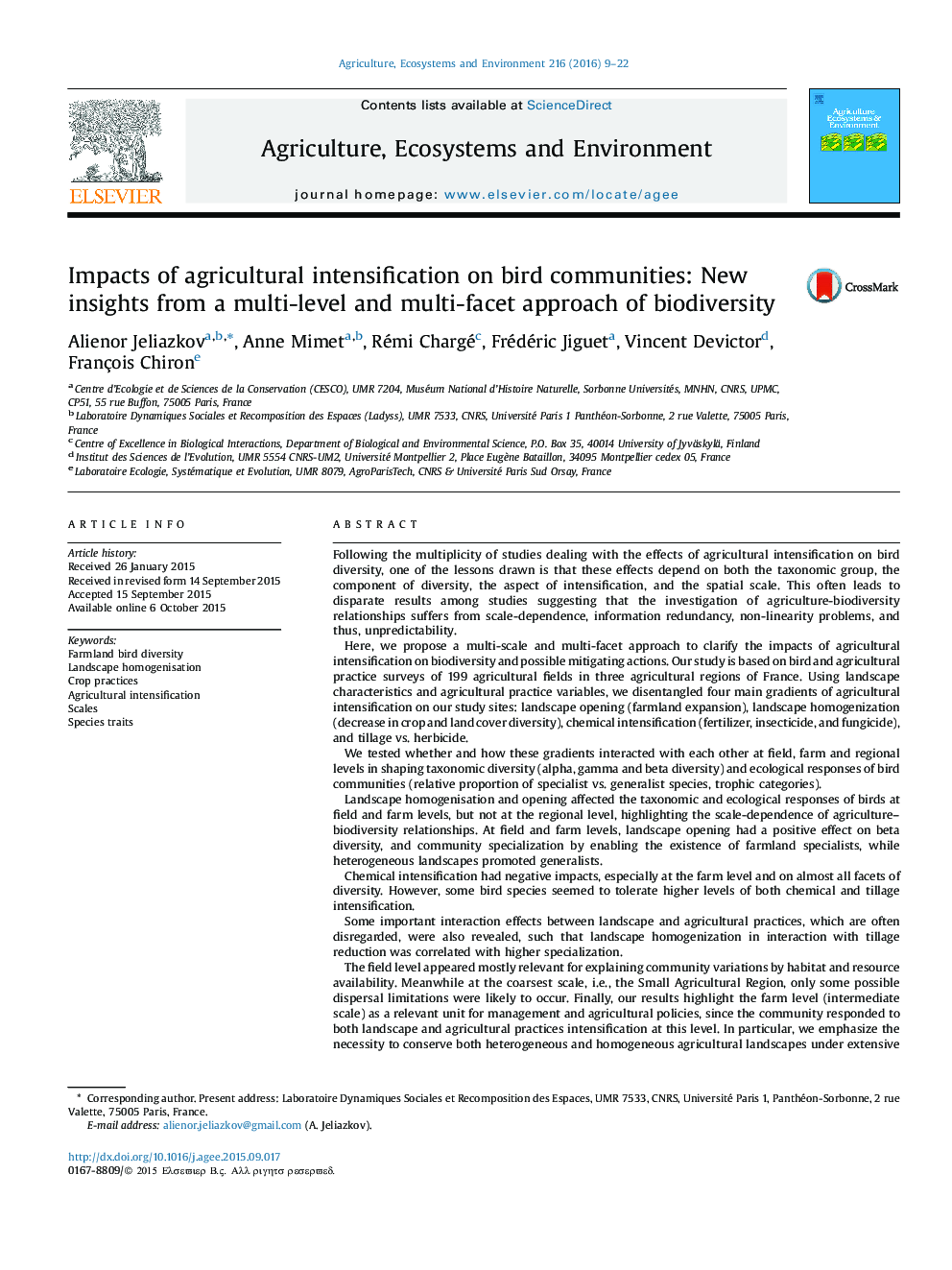| Article ID | Journal | Published Year | Pages | File Type |
|---|---|---|---|---|
| 2413621 | Agriculture, Ecosystems & Environment | 2016 | 14 Pages |
•Multi-scale impacts of agricultural intensification (AI) on farmland bird biodiversity?•Taxonomic diversity is affected by landscape simplification at field and farm scales.•Taxonomic diversity is affected by chemical intensification at farm scale.•Specialization and trophic complexity influence taxonomic responses to AI.•Landscape and practices interactions mitigate biodiversity responses to AI.
Following the multiplicity of studies dealing with the effects of agricultural intensification on bird diversity, one of the lessons drawn is that these effects depend on both the taxonomic group, the component of diversity, the aspect of intensification, and the spatial scale. This often leads to disparate results among studies suggesting that the investigation of agriculture-biodiversity relationships suffers from scale-dependence, information redundancy, non-linearity problems, and thus, unpredictability.Here, we propose a multi-scale and multi-facet approach to clarify the impacts of agricultural intensification on biodiversity and possible mitigating actions. Our study is based on bird and agricultural practice surveys of 199 agricultural fields in three agricultural regions of France. Using landscape characteristics and agricultural practice variables, we disentangled four main gradients of agricultural intensification on our study sites: landscape opening (farmland expansion), landscape homogenization (decrease in crop and land cover diversity), chemical intensification (fertilizer, insecticide, and fungicide), and tillage vs. herbicide.We tested whether and how these gradients interacted with each other at field, farm and regional levels in shaping taxonomic diversity (alpha, gamma and beta diversity) and ecological responses of bird communities (relative proportion of specialist vs. generalist species, trophic categories).Landscape homogenisation and opening affected the taxonomic and ecological responses of birds at field and farm levels, but not at the regional level, highlighting the scale-dependence of agriculture–biodiversity relationships. At field and farm levels, landscape opening had a positive effect on beta diversity, and community specialization by enabling the existence of farmland specialists, while heterogeneous landscapes promoted generalists.Chemical intensification had negative impacts, especially at the farm level and on almost all facets of diversity. However, some bird species seemed to tolerate higher levels of both chemical and tillage intensification.Some important interaction effects between landscape and agricultural practices, which are often disregarded, were also revealed, such that landscape homogenization in interaction with tillage reduction was correlated with higher specialization.The field level appeared mostly relevant for explaining community variations by habitat and resource availability. Meanwhile at the coarsest scale, i.e., the Small Agricultural Region, only some possible dispersal limitations were likely to occur. Finally, our results highlight the farm level (intermediate scale) as a relevant unit for management and agricultural policies, since the community responded to both landscape and agricultural practices intensification at this level. In particular, we emphasize the necessity to conserve both heterogeneous and homogeneous agricultural landscapes under extensive practices; the former promotes taxonomic diversity, when the latter favors specialized farmland biodiversity.
